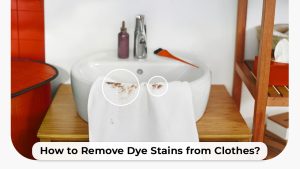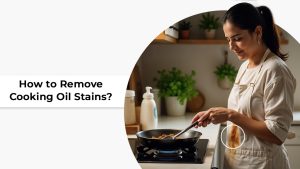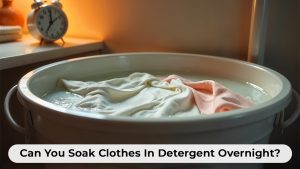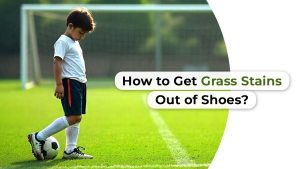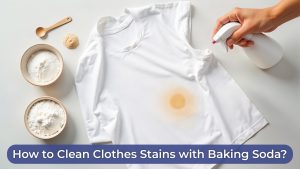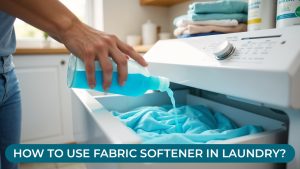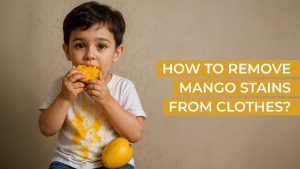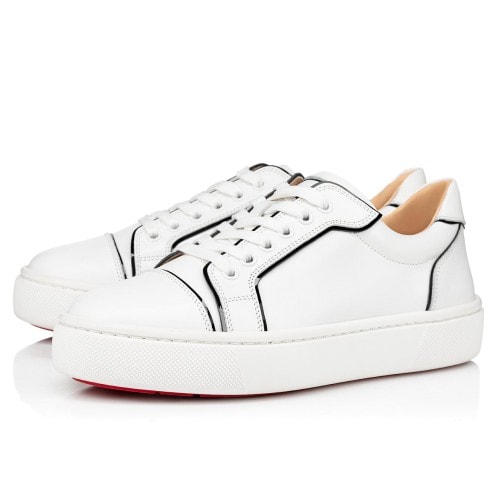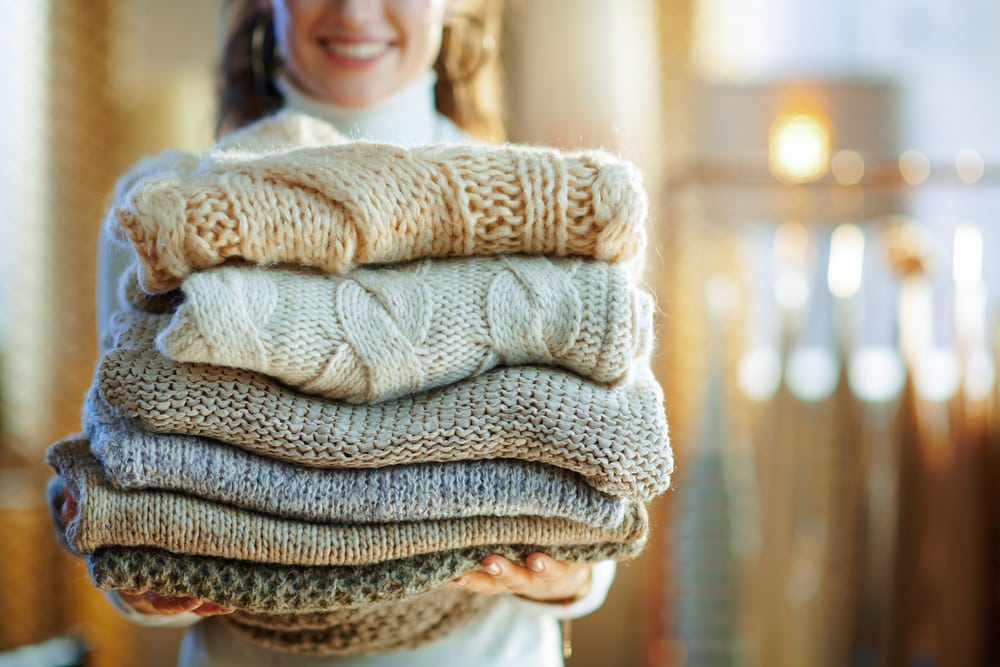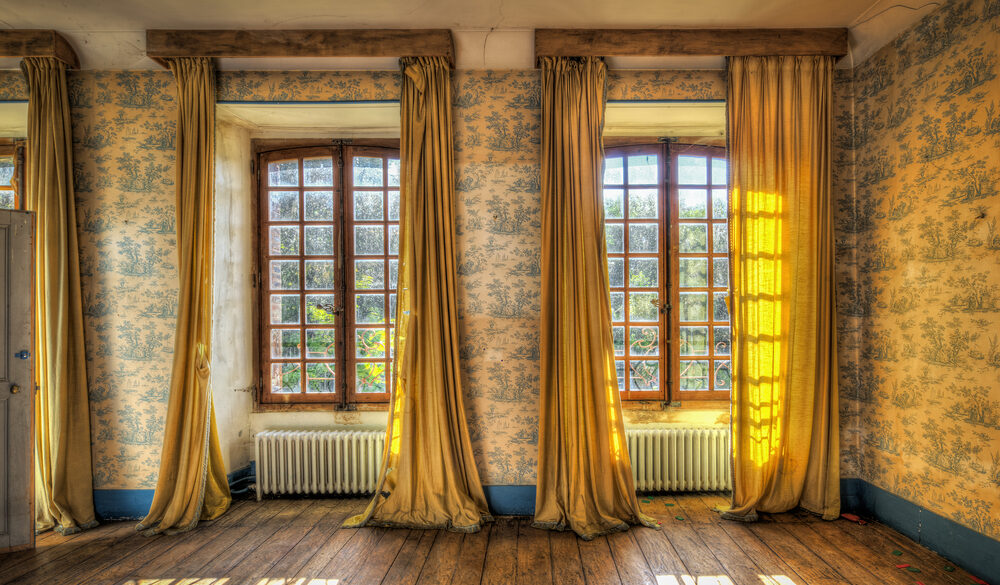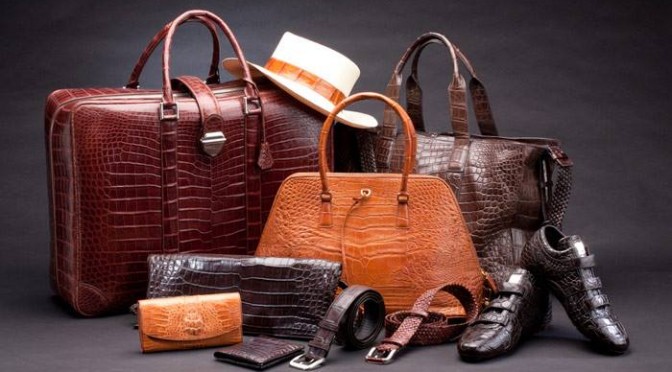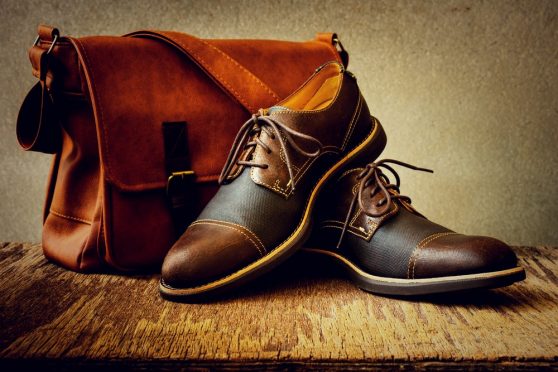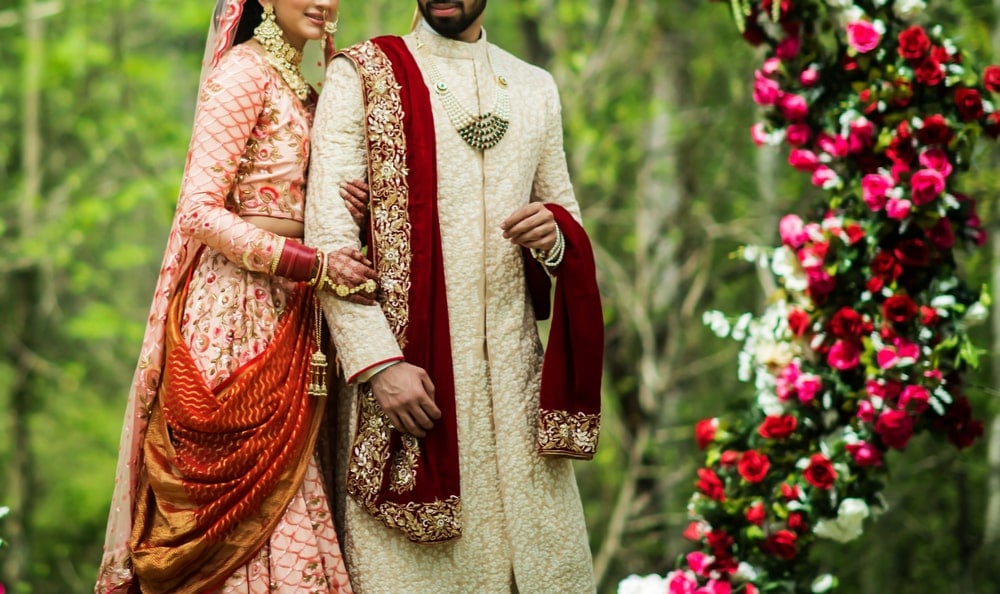Butter stains can be tricky. They are greasy,...
Read More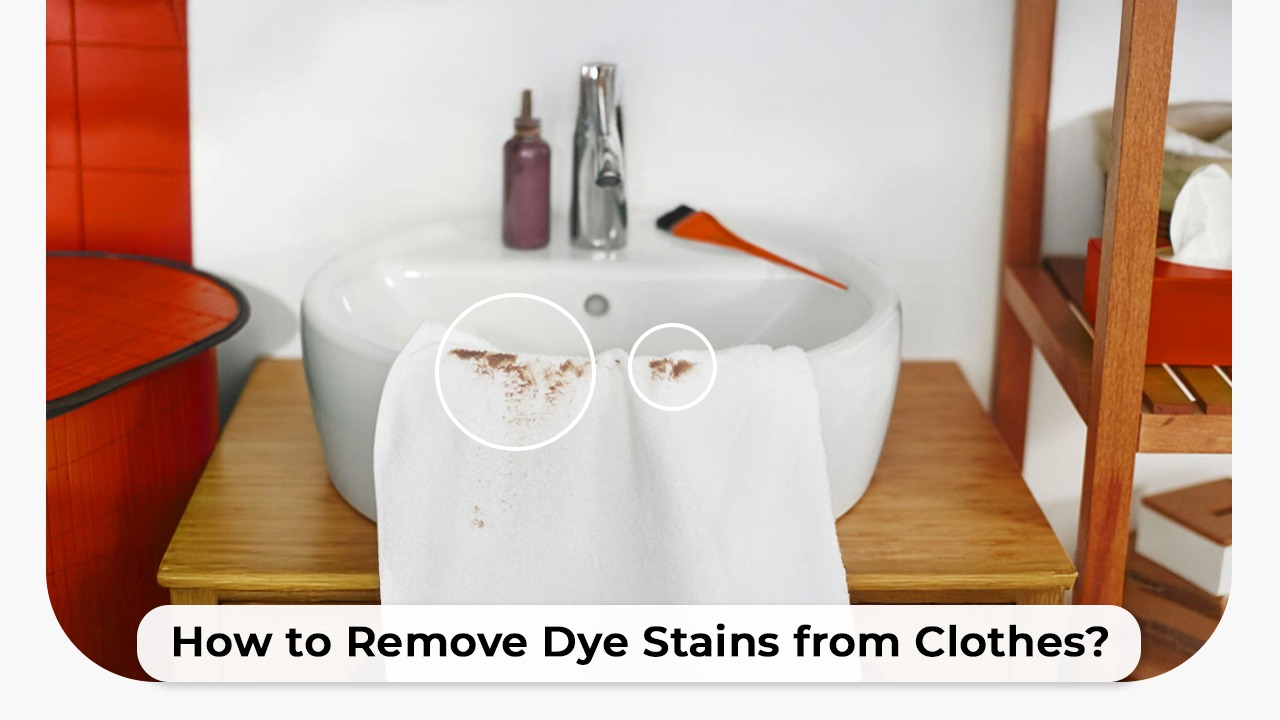
Table of Contents
Getting dye spilled on your gorgeous dress or spotting color transfer on your clothing after the laundry can be frustrating. It may be blue dye from new jeans or from hair dye that somehow splattered during an at-home coloring session; dye stains are some of the toughest stains to get out. But fret not! In this article, we will discuss in detail everything about how to remove dye stains from clothes, whether using natural solutions or commercially available stain removers.
From words on why it is so hard for dye to stay on the fabric and the actual step-by-step methods of removing it, this blog looks into various tricks to help you save your wardrobe. We also examine treatments for tricky stains, for example, how to remove hair dye stains or how to remove colour stains from clothes caused due to a colour run.
So, get ready because this extensive guide is packed with tried and tested advice, green methods, useful FAQs, extra checklists, and expert tips.
What Are Dye Stains?
A dye stain is formed when a dye molecule from one material binds with another. Some of the common sources of stains are:
- Hair dye
- Fabric dye (DIY tie-dye or factory-dyed clothing)
- Color bleeding from clothes in the wash
- Ink from pens/markers
Unlike dirt or oil, dyes bond chemically to the fibers. It is this chemical bonding that makes it harder to remove dye stains with a regular detergent or just water. Synthetics, cotton, and wool are all susceptible to dyes, but they all react differently, depending upon their fiber composition. Cotton, for example, may take up more dye, whereas synthetics may resist it, requiring a different kind of treatment.
Get spotless clothes at your doorstep!
Types of Dye Stains
- Direct Dye Stains: Found in cotton and cellulosic fibers; water-soluble but hard to remove.
- Disperse Dye Stains: Common in synthetic fabrics like polyester; requires solvents to lift.
- Reactive Dye Stains: Often seen in hair dye; chemically bonds with fabric and needs strong oxidizing agents.
Understanding the origin and type of dye stain is crucial to selecting the best removal technique. Each stain is different, and knowing what caused it will help determine the most effective course of action.
Why Acting Quickly Is Critical?
The key to successful stain removal is immediate action. The longer a dye sits on fabric, the deeper it embeds, often setting permanently.
Quick First Steps:
- Blot the stain – never rub it. Rubbing spreads the stain and pushes it deeper into the fibers.
- Rinse under cold running water to remove as much dye as possible.
- Avoid heat (no hot water or tumble dryers). Heat will set the stain, making removal extremely difficult.
Whether it’s a fresh color run or a hair dye spill, the faster you act, the higher your chances of completely removing the stain.
Why Cold Water Works:
Cold water will help to restrict the togetherness or bonding of color particles and adhere the fibers to color. Only cold rinses are recommended for the first rinses.
How to Remove Dye Stains from Clothes: Home Remedies
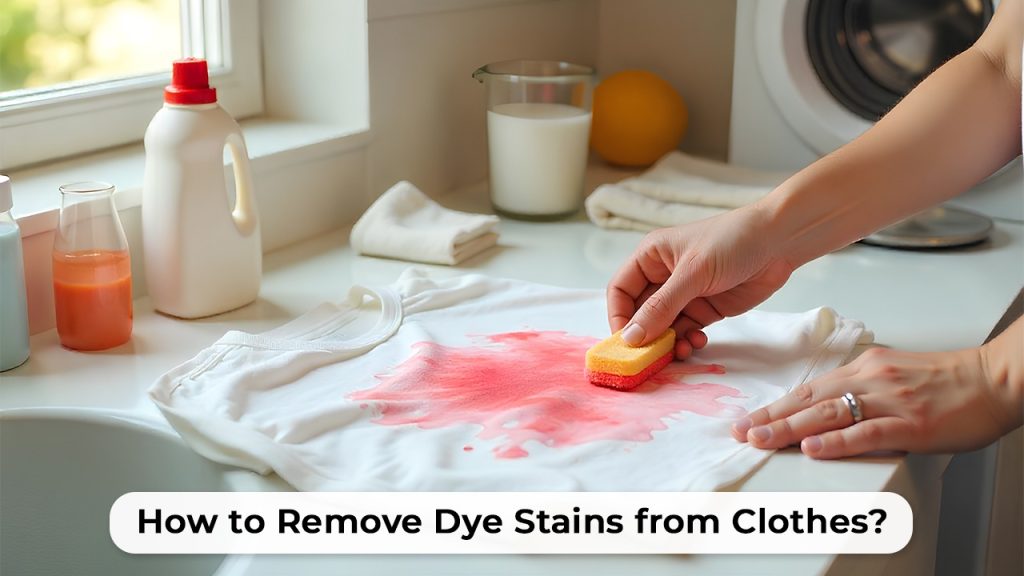
If you opt for natural or green solutions, these home products may eliminate dye stains without chemicals. Not only are they safe for your clothes but also for your body and the environment.
1. Vinegar and Baking Soda
Best for: Light stains, recent color transfers
Instructions:
Mix 1 tbsp white vinegar and 2 tbsp baking soda to form a paste
- Apply it to the stain
- Let sit for 30 minutes
- Rinse and launder as usual
This combo works by neutralizing and lifting pigment molecules without damaging fibers.
2. Lemon Juice and Salt
Best for: Whites, cottons
Instructions:
- Squeeze lemon juice on the affected area
- Sprinkle salt generously
- Rub gently and leave in sunlight for 1 hour
- Wash with cold water
- The citric acid in lemon juice acts as a natural bleaching agent, while salt adds mild abrasion.
3. Hydrogen Peroxide and Dish Soap
Best for: Hair dye or synthetic stains
Instructions:
- Mix equal parts 3% hydrogen peroxide and mild dish soap
- Apply with a sponge or toothbrush
- Wait 20 minutes, then rinse
Hydrogen peroxide breaks down dye molecules and dish soap lifts them away.
4. Milk Soak Method
Best for: Delicate fabrics (silk, lace)
Instructions:
- Soak the stained area in cold milk for 2-4 hours
- Gently rub with your fingers
- Rinse thoroughly and wash
The proteins in milk bind to dye particles and pull them out gently.
5. Salt and Vinegar Soak
Best for: All fabrics except silk
Instructions:
- Add 1 cup vinegar and 1 tbsp salt to a bucket of cold water
- Soak the garment overnight
- Rinse and launder normally
This extended soak loosens deeper dye embeds, especially for set stains.
Get Shiny and spotless clothes at home
How to Remove Hair Dye Stains?
Hair dye stains are notoriously tough because they’re chemically formulated to last. But these solutions can help lift the color effectively.
1. Rubbing Alcohol
Instructions:
- Dab a cotton ball in rubbing alcohol
- Blot the stain repeatedly until the dye starts lifting
- Rinse with cold water
Alcohol dissolves many types of dye, especially semi-permanent hair colors.
2. Hairspray
Instructions:
- Spray the stained area with an alcohol-based hairspray
- Let it sit for 5–10 minutes
- Rinse and repeat if necessary
The alcohol content in hairspray can work similarly to rubbing alcohol.
3. Ammonia Solution
Caution: Use gloves and ensure good ventilation.
Instructions:
- Mix 1 tbsp ammonia with 1 cup water
- Soak a cloth and blot the stain
- Rinse and launder as usual
These techniques are among the most effective when exploring how to remove hair dye stains from clothing.
How to Remove Colour from Clothes?
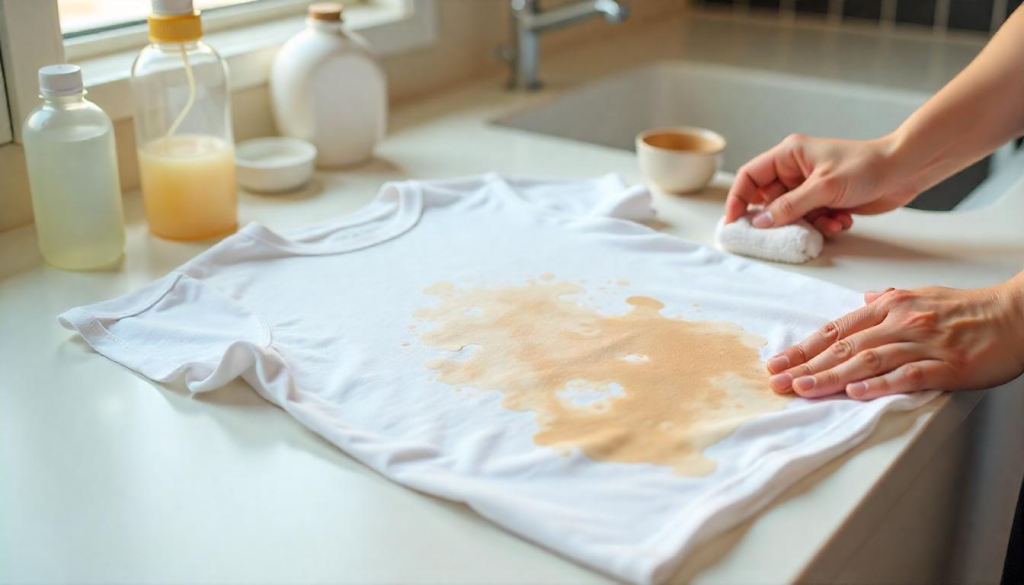
Color runs often occur when clothes bleed in the wash. Here’s how to remove colour from clothes and reverse the damage.
1. White Vinegar Soak
Instructions:
- Fill a basin with cold water
- Add 1 cup white vinegar
- Soak the garment for 1 hour
- Rinse thoroughly
- Baking Soda Booster
Instructions:
- Add 1/2 cup baking soda to your regular wash cycle
- Helps neutralize and lift color residue
- Commercial Color Run Removers
Use products like:
- Rit Color Remover
- Dr. Beckmann Colour Run Remover
- Carbona Color Run Remover
Follow package instructions carefully. These are designed to specifically reverse color transfer. These methods work well even if the color transfer happened during a machine wash.
Flat 20% off on 1st order-
schedule free pick up
Commercial Solutions for Dye Stain Removal
When home remedies do not work, there are commercial removers that will provide powerful and reliable interventions
1. Enzyme based detergents
Brands: Ariel Matic, Persil, Tide
Enzymes work to break down colour pigments. You can either treat the stain with a cream or lotion pre-treatment or soak the item in detergent for 30-minutes before washing.
2. Oxygen Bleach (Not chlorine)
Examples: OxiClean, Vanish Oxi Action
Soak the item for 4 hours – 8 hours, before washing. It is safe on colours.
3. Colour catcher sheets
How to use:
Add to your machine wash
When placed into the wash, catches loose dye during the machine wash cycle and prevents further staining.
4. Pre Stain spray treatments
Examples: Shout Advanced Gel, Spray ‘n Wash
This is applied directly on the stain area prior to laundering.
Fabric-Specific Procedures
- For Cotton
All the home remedies generally work
Avoid scrubbing as much as possible to prevent fading
- For Silk/Wool
Use milk soak or a silk laundry detergent
Avoid anything with peroxide or ammonia
- For Synthetics
Hydrogen peroxide and baking soda work well
Proceed with enzyme detergent
Prevention Strategies to avoid Dye Stains
Laundry Sort
Always keep whites, darks, and bright colors separate
New Clothes Pre-Wash
Soak in cold salt water (1 tsp salt/liter) to set dye
Cold Water Wash
Reduces risk of probable color bleeding
Use Color Catchers
Best for mixed loads
Don’t Overload the Dryer
More room will allow better rinsing thus reduce color bleed
Air Dry Unsure
Always air dry suspected color transfer laundry
Read Clothing Labels
Look for “Colorfast” disclaimers and wash accordingly
Expert Tips from Laundry Professionals
- Check stain removers on an inside seam first
- Don’t machine dry stained clothes, heat sets stains
- For set-in or old stains repeat treatment 2-3 times
- Wipe with white towels to avoid cross-transfer of other dyes
- Respond in the first 24 hours for best results
- Have a stain remover kit ready that has baking soda, vinegar, and rubbing alcohol
- Have stain-fighting products in travel size containers for emergencies
- Label new clothes and isolate until their first washes
Bonus: Quick Checklist
If You Get a Dye Stain on Your Clothes: Take These Steps Right Away
Be quick – Time is the most important factor. Apply a treatment solution as soon as possible.
Blot, do not rub – Use a white cloth to blot gently to absorb excess dye.
Rinse with cold water – Use cold running water to rinse the stained area to help flush out the dye from the fabric.
Choose a solution – Pick a treatment method based on fabric and type of stain (vinegar paste, peroxide solution, or soaking in milk).
Test first – always test the treatment on an inconspicuous part of the fabric like an inside seam.
Treat and wait – Place the chosen solution on the stain and wait the recommended time.
Rinse thoroughly – Ensure you rinse completely to remove the treatment solution prior to laundering.
Launder on a gentle cycle – Wash the garment separately in cold water with detergent.
Do not dry – Only air dry until there is no trace of stain.
Repeat as necessary – They can be very stubborn stains and may need 2 or 3 applications.
Conclusion
Dye stains can be tough, but certainly not permanent! With the right techniques, tools, and timing, you can tackle even the greatest dye catastrophes. You’ve learned how to remove dye stains from clothes, faced the tougher challenges of how to remove hair dye stains from clothes, and even how to remove colour from clothes After a laundry disaster, and now you are equipped to conquer every single colour stain you face.
Remember speed, the right remedy, and patience on your part are important. You now have a complete reference guide and feel free to tell those dye stains goodbye for good. Next time you see an eye catching blotch on your shirt, you won’t panic-you’ll treat it like a pro.
FAQs
Cold water rinse followed by vinegar or baking soda paste.
Only oxygen bleach. Never, ever use chlorine bleach on colored items.
Yes, however delicate fabrics need gentler methods such as milk soak.
Enzyme detergent or a commercial dye remover. This may take several applications.
Yes if treated quickly with the appropriate method (rubbing alcohol, peroxide, or ammonia).
Sort laundry, wash in cold water, pre-wash new clothes, add a color catcher to your load.
Yes, if diluted to 50/50 ratio with water and care is taken. Do not use on silk or wool.
Absolutely! They absorb floating dyes in the wash to reduce color transfer.
In many instances yes! It really depends on the fabric and dye. However, professionals have specialized removers.
Most should be safe for colorfast items, be sure to do a patch test always.
Disclaimer: The opinions expressed in this article are those of the author. They do not necessarily purport to reflect the values or views of Tumbledry.
How to Remove Dye Stains from Clothes?
Learn the effective way of removing dye stains...
Read MoreHow to Remove Cooking Oil Stains from Clothes?
Cooking mishaps involving oil can turn your best...
Read MoreHow To Remove Paint Stains From Clothes?
Clothing paint stains, especially those caused by specialty...
Read MoreCan You Soak Clothes In Detergent Overnight?
Can you soak clothes in detergent overnight? This...
Read MoreWhat Are Essential Oils And Their Benefits In
Essential oils are natural plant extracts known for...
Read MoreHow to Get Grass Stains Out of Shoes?
Grass stains on shoes are a common yet...
Read MoreHow to Clean Clothes Stains with Baking Soda?
It is very common to have food stains...
Read MoreHow To Use Fabric Softener In Your Laundry?
Fabric softeners help in maintaining your clothes while...
Read MoreHow To Remove Mango Stains From Clothes?
We all love eating mangoes in summer however...
Read MoreUseful Links
Choose professional shoe laundry services when your shoes have deep stains, strong odors, delicate fabrics like suede or leather, or require specialized cleaning techniques. If DIY methods fail to restore the original look or if you’re unsure about the right products to use, it’s best to rely on experts like Tumbledry. Professional cleaning ensures thorough care, extends your shoes’ lifespan, and saves you time. It’s also ideal for expensive or limited-edition sneakers that need gentle handling. When in doubt or dealing with tough cleaning challenges, turning to a professional service ensures your shoes are cleaned safely and effectively without the risk of damage.


